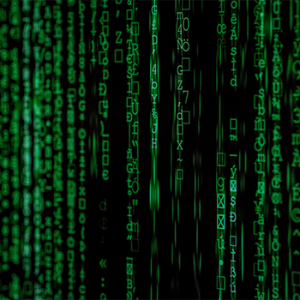How Field Data Can Help Keep Construction Workers Safe
Part of sound construction management entails evaluating each job site for potential safety hazards and correcting them. The issue extends beyond compliance with OSHA regulations — while this is critical, managers dedicated to team safety can also enjoy the cutting edge of technology to try out new preventative measures.
Construction professionals have more resources than ever for identifying and addressing hazards. Advances in technology make it possible to collect more information than ever, even when supervisors remain offsite. Here’s how field data can help keep construction workers safe.
Smart Devices Provide Worker Warnings
Jobsite hazards aren’t always readily apparent. For example, carbon monoxide is a clear and odorless gas known as the silent killer. Symptoms of poisoning resemble the flu , and many workers try to push through instead of discerning the underlying cause. Fortunately, portable monitors can alert workers to rising levels before they feel sick.
This concept can be taken even further with more advanced wearable technology. Today’s AR safety goggles and helmets can collect field data to help assess all kinds of job site risks. The proper eye protectors warn crew members when they approach an edge, preventing falls — one of the leading causes of on-the-job injuries. Smart helmets can identify worker fatigue to prevent microsleeps.
Drones Monitor Job Sites From Afar
Construction projects vary in scope. The mere presence of supervisory personnel may be insufficient to identify worksite hazards on jobs spanning considerable acreage, such as when erecting a new housing development. Furthermore, a bird’s-eye view offers a more complete picture than what one individual could spot from the ground.
Site hazards don’t only occur due to worker behavior. Consider erecting a school that spans several acres — children passing by could yield to curiosity about what’s inside that chain-link fence, and nimble ones can scale it in no time.
Professionals could face considerable liability and the loss of valuable equipment if an intruder develops sticky fingers. Monitoring the job site with drones improves overall security and provides law enforcement and the courts with a video recording of events. They can help officials catch thieves and potentially safeguard against lawsuits.
Augmented Reality Identifies Job Site Hazards Before Occupancy
Augmented reality creates a 3D model of a job site and the surrounding physical environment. It establishes a lifelike visual of the project before completion and is much more comprehensive than blueprints.
This technology protects worker safety by streamlining projects and eliminating or reducing costly rework. Fatigue and frustration can affect judgment, leading to accidents.
Furthermore, AR can help supervisors identify potential hazards before they begin construction. Nearby structures or mounds could make fences easy to scale in some areas — identifying these spots enables managers to select a taller size to prevent potential harm to passersby.

Maintenance Tracking Keeps Equipment Safe
Construction equipment can break, causing injury or death. While there’s no way to prevent manufacturer defects, many accidents occur due to improper maintenance. For example, failure to care for gas-powered devices like forklifts can substantially increase carbon monoxide emissions to dangerous levels in closed warehouses.
Field data can notify managers of maintenance needs, keeping them on schedule. Doing so preserves the life of equipment, saving money on costly replacements. Furthermore, they protect worker safety by identifying hazards such as malfunctioning safety bars before an on-the-job accident leaves a leader facing a worker’s compensation claim.
Wearables Collect Onsite Data
Wearable devices can transmit field data to a construction crew’s home office in real-time. Their sensors act like partners when a worker slips and falls. They use GPS to transmit the employee’s location — vital information if they lose consciousness.
Smart work vests may be the ultimate way to keep construction workers safe. These devices can monitor factors like the distance walked, average temperature, hours worked, GPS alerts to hazard zones and call buttons to request help. Supervisors no longer need to rely on their employees’ subjective analysis of their fatigue level — they can demand breaks when temperatures soar and exhaustion makes continuing activity dangerous.
How Field Data Can Help Keep Construction Workers Safe
Construction supervisors face a challenge when monitoring worker safety. Those with multiple projects may not be on one site at all times, and even those on location can’t oversee everything.
Field data can help keep construction workers safe by identifying hazards, providing warnings and maintaining their equipment safe for use. This information can also safeguard owners against potential liability from trespassers and drive wiser decision-making when conditions become extreme.
Interested in receiving more great construction news, research and content from NCCER? Click here to join our mailing list!

